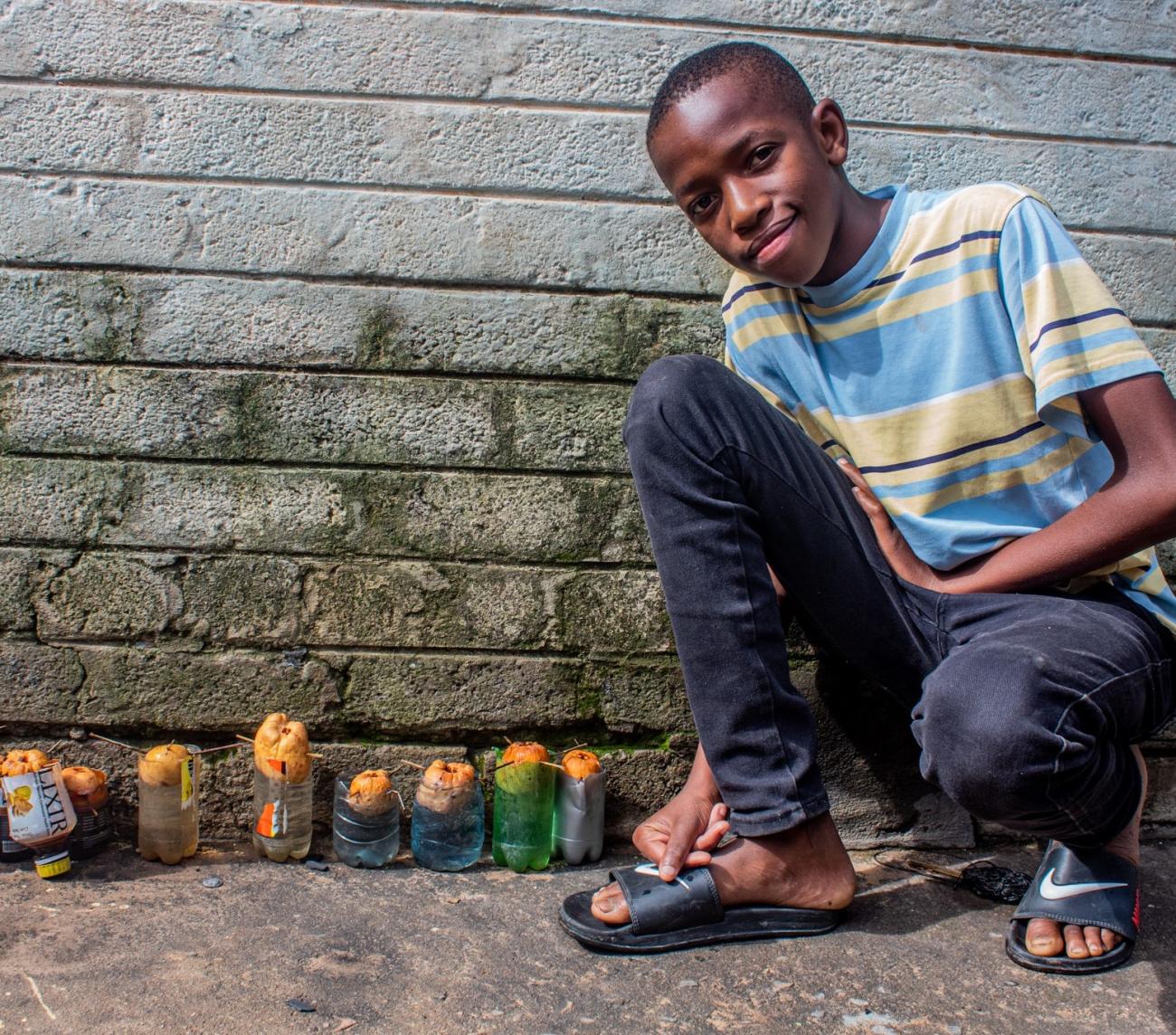Seeds of hope: Hydroponics tech in Zambia boosts school meals

To mark the sixth annual Africa Day of School Feeding, the World Food Programme highlights a greenhouse initiative that allows food to be grown all year round
David is learning to grow avocado, green peppers, chillies, rapeseed leaves and potatoes using hydroponics techniques. “My dream is to become a hydroponics expert,” he says. Hydroponics is a soilless cultivation technique that enables plant growth all year round. It uses up to 90 percent less water and 75 percent less space than traditional agriculture, while growing crops 100 percent faster.
The 13-year-old lives in Kitwe, Zambia — a country of 18 million people whose food security is threatened by extreme weather caused by climate change.
Each month the World Food Programme (WFP) supports thousands of people there, including smallholder farmers whose hopes of growing crops are crushed by long spells of dry weather.
Smallholder farmers produce 90 percent of Zambia's food — and 80 percent of them are women.
For 1 million schoolchildren, locally grown crops and school gardens are critical to the school meals they receive — food is supplied as part of programmes to provide the nutrition that is essential for them to learn better and grow.
In the absence of that, techniques such as hydroponics provide a lifeline to individuals and communities, enabling governments to nourish the next generation. This is a familiar story across the continent, and it explains why the African Union is keen to promote sustainable ‘home-grown’ school feeding on Africa Day of School Feeding.
WFP has supported the Government of Zambia to set up 23 greenhouses in schools across the country to pilot hydroponics. Each greenhouse shields around 2,000 plants which produce an estimated 1,300 kg of vegetables per month. Trainings been provided to more than 400 teachers, parents and students at the schools.
Schools are also piloting ‘grainy bag’ cultivation — growing crops in plastic or fabric bags with tiny holes for better drainage and oxygen. The soil in the bag is mixed with charcoal dust, an organic fertilizer which conserves soil pH levels and retains water to create a natural environment where crops can flourish.
Vegetables not only provide nutrients to help children develop and succeed, they help schools generate income from surplus production, which in turn sustains the hydroponics gardens.
Now schoolchildren like David are bringing their newly acquired knowledge home with the aim of growing fresh and nutritious produce for their families and utilising the technologies for their future livelihoods.
“We had our first harvest in the school greenhouse three weeks after planting,” says David. “I couldn’t believe it — plants used to take months to grow in the garden and would often dry up when we had no rain. They tasted so fresh.”
After visiting the school, “I was convinced right away,” says David's mother. “I’d much rather grow my own vegetables, but space is an issue here in Kitwe.”
And hydroponics equipment is expensive.
“We used plastic buckets, recycled bottles, a plastic sheet and a chicken cage to set up the hydroponics site,” says David. “We couldn’t find any hydroponic fertilizer, so we used soil fertilizer in the water. For the bags, we used old maize-meal bags and charcoal dust as fertilizer.
“We had our first harvest of sweet potatoes a few weeks ago. They took three to four months to grow in the bags. Usually, they would take four to five months.”
David hopes to harvest his green peppers soon. But his rapeseed leaves have been growing slower than expected.
John Serwanga, hydroponics consultant with WFP, calls the family with tips. “I told them to stop using soil fertilizer as it does not work in hydroponics sites. This is why the roots are turning brown and the plants are growing slowly.”
David says: “We hope that following these tips will help us harvest even more vegetables. My mother bought me some bricks so that I can make can an even bigger hydroponics site and keep finding new solutions to achieve my dream.”


